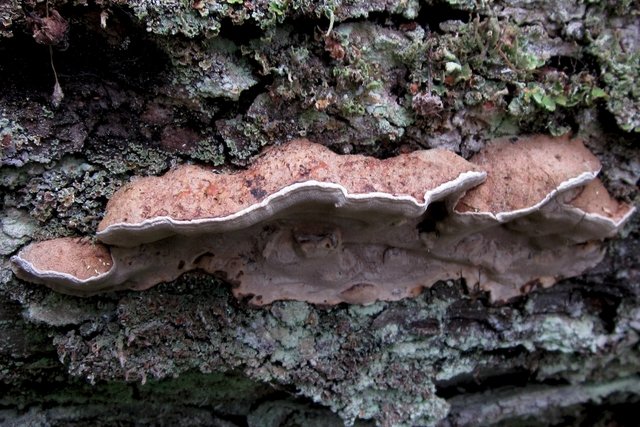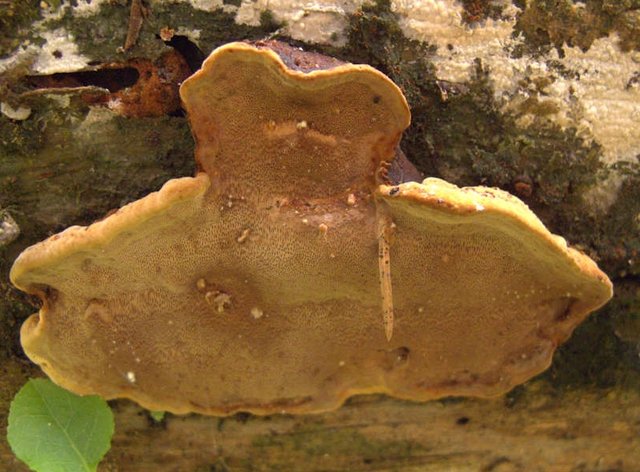Black polypore (Phellinus nigrolimitatus)
- Division: Basidiomycota (Basidiomycetes)
- Subdivision: Agaricomycotina (Agaricomycetes)
- Class: Agaricomycetes (Agaricomycetes)
- Subclass: Incertae sedis (of uncertain position)
- Order: Hymenochaetales (Hymenochetes)
- Family: Hymenochaetaceae (Hymenochetes)
- Genus: Phellinus (Phellinus)
- Type: Phellinus nigrolimitatus (Phellinus nigrolimitatus)
:
- Black coals
- Cryptoderma nigrolimitatum
- Ochroporus nigrolimitatus
- Phellopilus nigrolimitatus
- Coal potter

fruit bodies perennial, of various shapes, from sessile caps, which can be either regular rounded or narrow, elongated, elongated along the substrate, sometimes tiled, to fully resupinate, 5-15 x 1-5 x 0,7-3 cm in size. When fresh, they are soft, have the consistency of a sponge or cork; when dried, they harden and become brittle.
The surface of young fruiting bodies is very soft, velvety, felted or hairy, rusty brown. With age, the surface becomes bare, becomes furrowed, acquires a chocolate brown hue and may be overgrown with moss. The sharp edge of the caps retains a yellow-ocher color for a long time.
the cloth two-layered, softer, light rusty brown above the tubes and denser and darker towards the surface. The layers are separated by a thin black zone, which is clearly visible in the section, as a black strip several millimeters wide, but sometimes – in large, fused, filling the depressions of the substrate of the fruiting bodies – it can reach 3 cm.
Hymenophore smooth, uneven due to the irregular shape of the fruiting bodies, golden brown in young specimens, reddish brown or tobacco in more mature ones. The edge is lighter. The tubules are layered, light brown or grayish brown, the annual layers are separated by black lines. The pores are round, small, 5-6 per mm.

Споры thin-walled, from almost cylindrical to fusiform, widened at the base and narrowed at the distal end, 4,5-6,5 x 2-2,5 µm, hyaline, yellowish when mature.
It grows on deadwood and stumps of conifers, mainly spruce and fir, sometimes pine. Also found on treated wood. Distributed throughout the taiga zone, but does not tolerate human economic activity and prefers forests that have remained untouched throughout the life of several generations of trees, so the best place for it is mountain forests and reserves. Causes spotted rot.
Inedible.
Photo: Wikipedia.









